This page includes photos of just a few of the many wildflowers that can be found in Douglass Park, especially in the sanctuary and at the edges of the lagoons. The photos are arranged in order of the seasons, from early spring through late fall.
With its large patches of wetland, meadow, and prairie-like habitats, Douglass Park specializes in summer and fall flowers. There are no older woodlands in the park, so we do not find traditional woodland wildflowers, like trillium and Trout Lily. (We did find one patch of Spring Beauty this April.)
Some of the earliest spring blooms we do find in the park are flowering shrubs and trees.

Serviceberry trees can be found on the lawns around the north lagoons. Their early spring flowers develop into sweet blue fruits that feed the parks robins and Cedar Waxwings during June. (April, 2016)
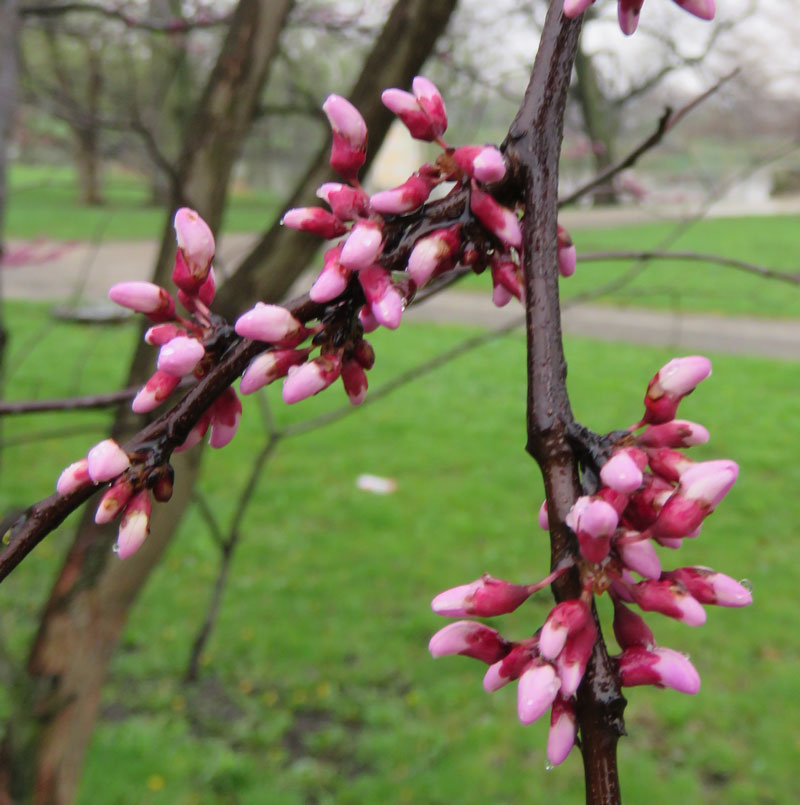
Redbud trees also bloom in April on the lawns around the lagoons. (April, 2016)
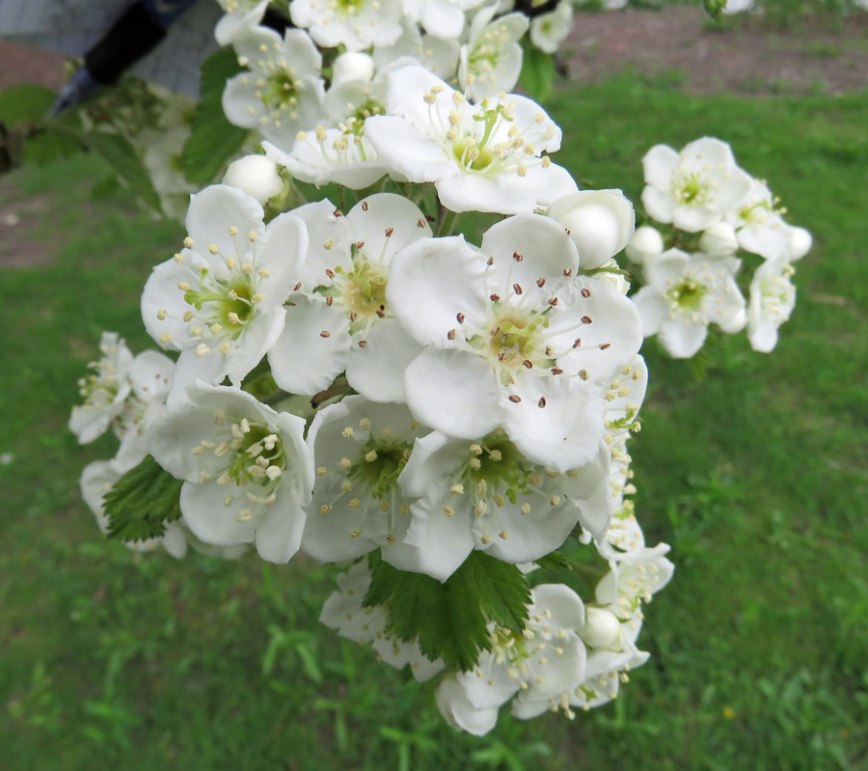
Crab Apples are one of the most bird-friendly trees in Douglass Park. Their white flowers attract many small insects, which feed spring migrants like warblers and flycatchers. In fall their ripe fruits feed robins, waxwings, and migrant thrushes. (April, 2016)
The some of the park’s early wetland and meadow flowers we brought it this area by European immigrants. Below are a few examples.

Yellow Iris blooms at the edges of the lagoons. (May, 2016)

We find a couple of cultivated varieties of columbine in the sanctuary meadow, including this striking double-flowered columbine.
Some of the original Illinois prairie and meadow wildflowers begin blooming in late May. They are just a prelude to the sanctuary’s riot of summer colors.

Spiderwort (May, 2016)
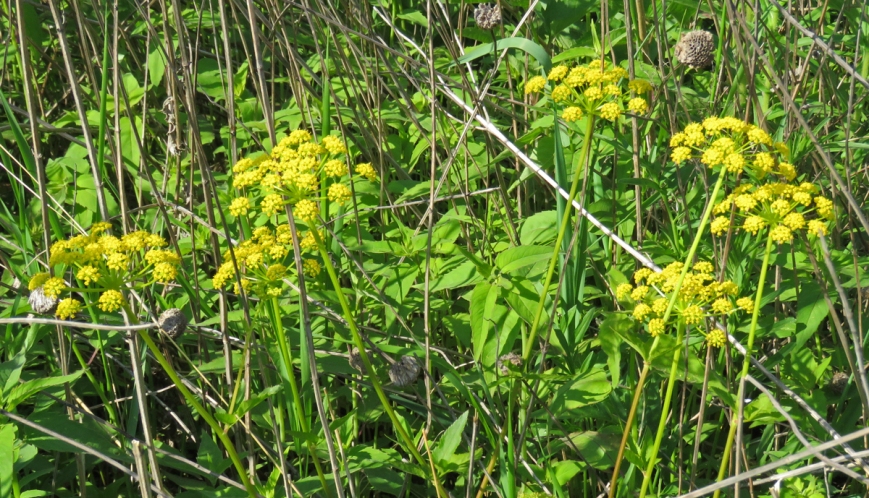
Golden Alexanders (May, 2016)
If you search the edges of park’s lagoons and ponds, you can find these summer wildflowers.
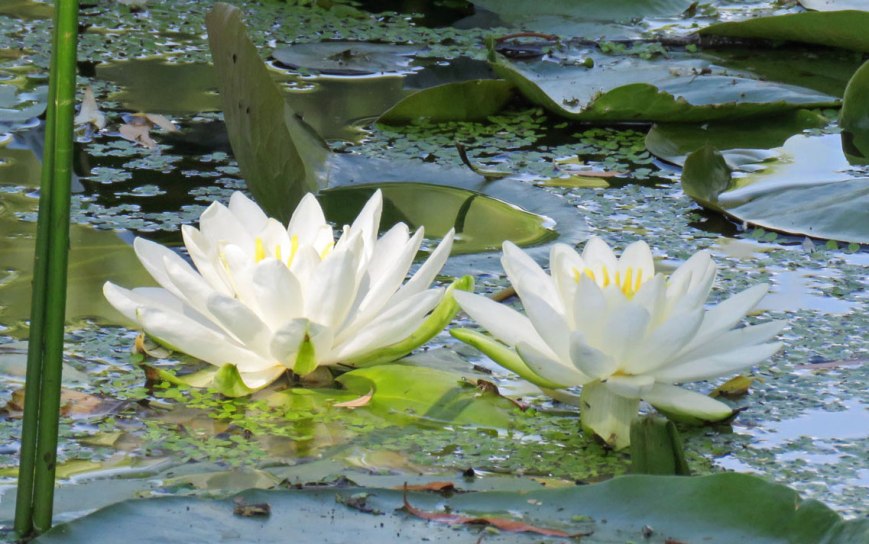
There really are water lilies on the park’s Lily Pond, south of Ogden. (June, 2016)

Broadleaf Arrowhead (August, 2016)
Beginning in July, the park’s meadow and prairie-like habitats are in full display mode.

The edge of the sanctuary meadow. (July, 2016)

Wild Bergamot, a native mint. (July, 2016)

Rosinweed, a sunflower relative. (July, 2016)
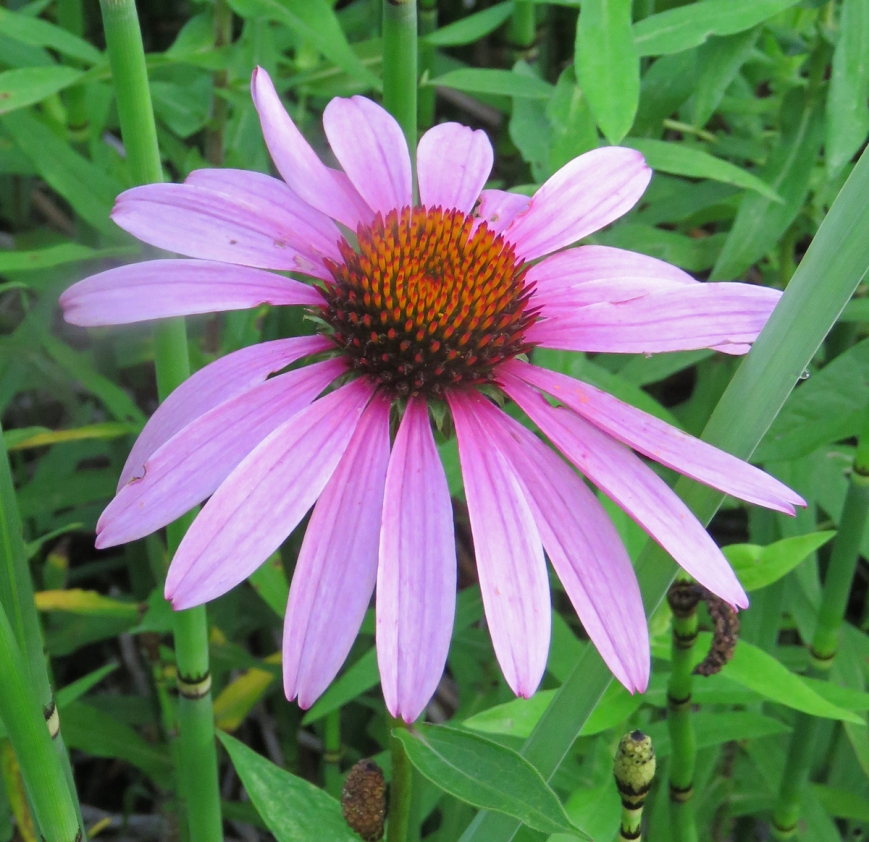
Purple Coneflower (July, 2016)

Yellow Coneflower (also called Gray-headed Coneflower) July, 2016)

Obedient Plant (July, 2016)
The edges of the lagoons also have wildflowers in July and August. One of my favorites is Swamp Milkweed. I enjoy both Swamp Milkweed flowers and the bugs the flowers attract (including Carpenter Bees, Great Black Wasps, and Monarch Butterflies).
There’s lots more color to be found in the park’s sanctuary in late summer and early fall, and — let’s be frank — most of it is yellow.
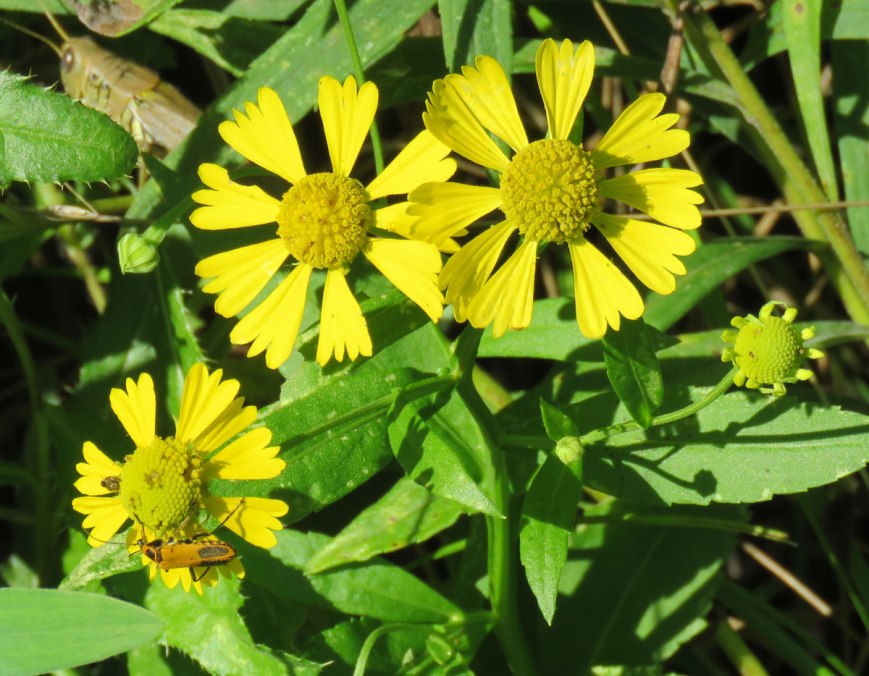
Sneezeweed (August, 2016)

Common Sunflower (August, 2016)

Common Evening Primrose (August, 2016)

Stiff Goldenrod, one of the many goldenrods that bloom during late summer and early fall. August, 2016)
A few purple flowers swim in the the sanctuary’s summer sea of yellow, especially once the asters start to bloom.

Ironweed (August, 2016)

New England Aster (September, 2016)
By September, the edges of the Douglass Park lagoons are putting on a show.

Asters and goldenrods at the edge of Douglass Park lagoon. (September, 2016)
By October, most of the park’s wildflowers have gone to seed. But that’s a good thing! Wildflower seeds are beautiful, too, and they provide food for goldfinches, sparrows, and other migrant birds.

Stiff Goldenrod gone to seed (October, 2016)

American Goldfinch eating Evening Primrose seeds. (October, 2016)





